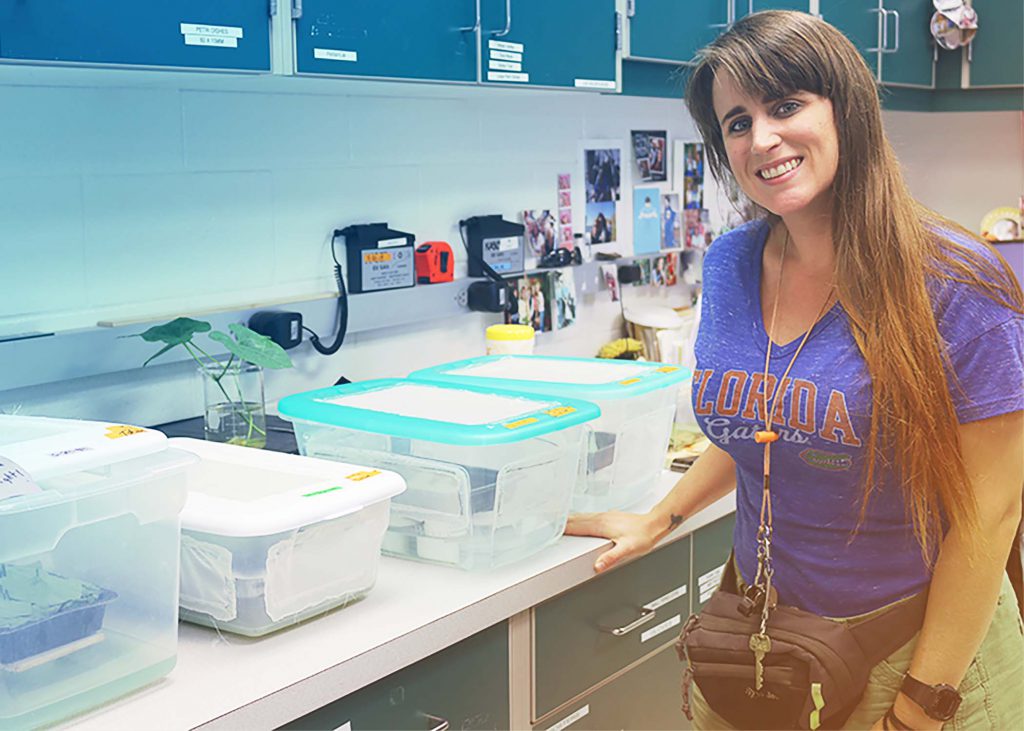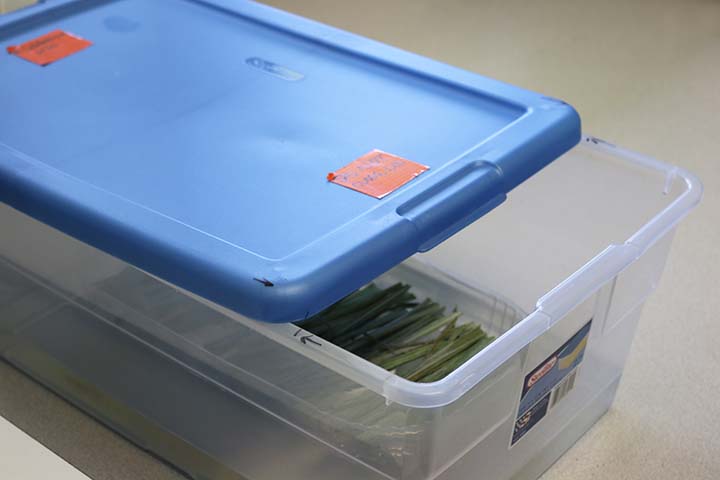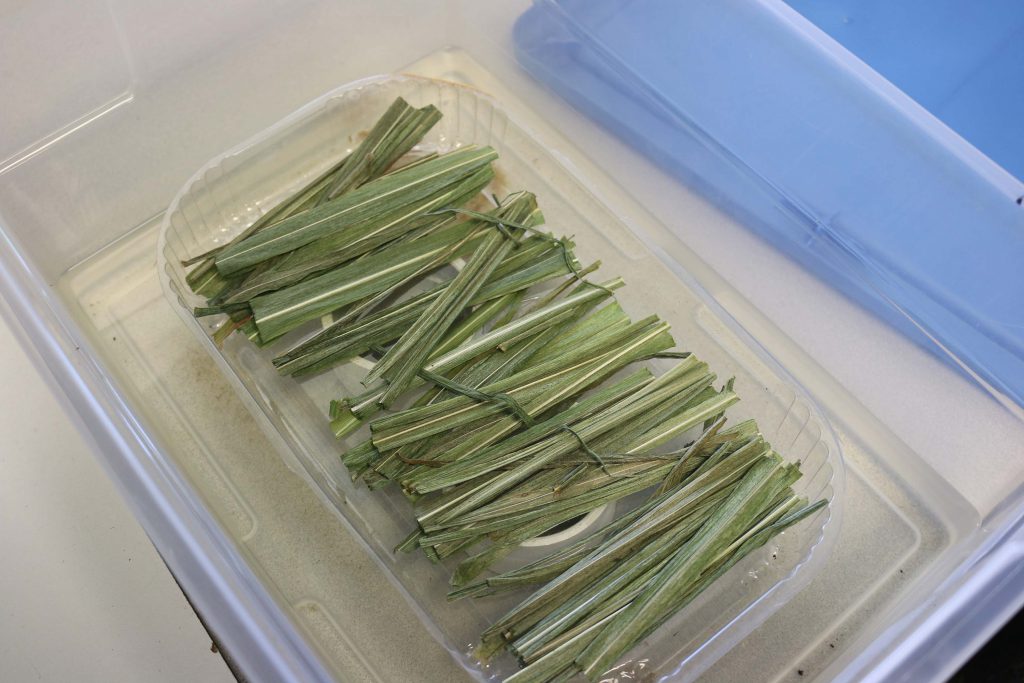Last Updated on December 6, 2019 by Angela Colonna
Two years ago, Sarah Birkmire took her first entomology class and since then she has been hooked on the study of insects.
An avid gardener herself, Birkmire is interested in pest control and plays scientist in her own garden of potted plants and raised beds to find effective ways of managing pests to maintain healthy ornamentals, herbs and vegetables. Her vegetable garden has a variety of plants such as bok choy, kale, eggplant, broccoli, cauliflower and squash varieties.

Birkmire is a UF Online environmental management undergraduate student and interned with Lance Osborne, University of Florida professor of entomology, before being hired at the UF/IFAS Mid-Florida Research and Education Center in Apopka.
Creating the DIY System
While Birkmire was scoping out undergraduate thesis projects, she came across the idea to continue past research on mite rearing to create a small-scale, do-it-yourself (DIY) predator-rearing system. Under Osborne’s guidance, Birkmire based her project on laboratory mite, the predator being studied, rearing techniques from the 1940s and 1950s.
“We want to add to the literature on mite rearing so it can be accessible to more people who would use beneficial predators like mites on smaller scale,” said Birkmire.
The idea behind this project is for high school teachers, college professors, homeowners, Master Gardeners and Extension agents to rear their own mites for use in small gardens, classrooms and training workshops, said Birkmire.
In total, the DIY predator-rearing system costs about $50. Supplies can be purchased at any hardware store. Items on the supply list include small plastic container with lids, PVC pipes, water, soil, seeds and pots. The seeds and pots are needed to grow corn plants used to feed the Banks grass mites.
“We wanted the whole project to be cheap and easy so really anyone could do this themselves for learning demonstrations,” said Birkmire.
In her undergraduate honors thesis, she also wanted to look at what was the ideal location to manage rearing beneficial insects. For example, an indoor lab facility versus a greenhouse offers different ways to manage variables like light, temperature and humidity.
The thesis will also include survey data to gauge the interest of educators and Extension agents who could use a DIY predator-rearing system. The survey results will help shape future DIY systems and assess needs of those who could benefit from this system in their work.
The System
First, the sweet corn plants need to be grown as a food source for the mites. The corn plants need to be kept healthy and alive for the mites.
Next, there are three plastic containers or boxes involved: one predator and two prey. The predator used is N. californicus and the prey used is the Banks grass mites for the predator to eat in the system.
Each box has about one inch of water in the bottom with two, two-inch high cut PVC pipes in the middle, at an even distance apart. On the PVC pipes is a small plastic tray holding the corn leaves for the mites. The lids on the boxes are left slightly open for air circulation. A fungus can grow if the lid is completely closed.

“Three times a week, you need to feed the leaves infested with the prey to the predators and add fresh corn leaves to the box,” said Birkmire. “Otherwise, it is a low maintenance system.”
Cross contamination between the boxes is a concern and if not careful, you might have to start the whole project over again. It is key to put the corn leaf with mites to the side then put a fresh corn plant leaf in the prey box. Then the corn leaf with the mites you set to the side goes into the predator box.

“To avoid cross contamination, be sure to pay attention to the order you work with each box,” said Birkmire. “Otherwise, predators may infest the box for your prey and eat all the.”
Then, as needed, put corn leaves with predators on mite infested leaves of plants in a garden or plant-filled area so they can eat the mites pestering your plants. It is important to make sure you do not put corn leaves infested with the Banks grass mites on plants, especially corn plants, until there are more predators than prey.
The goal is to stock predators and mites to then use on the infested plants when needed, the good-bugs-eat-bad-bugs mentality.
For more information about biological controls in urban areas from MREC researcher Lance Osborne, follow this link.
For a better understanding of ‘good bugs and bad bugs’ in Florida, check out this UF/IFAS EDIS publication.
 0
0
